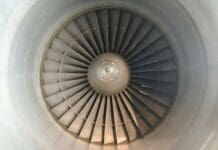This post is also available in:
 עברית (Hebrew)
עברית (Hebrew)
Researchers have demonstrated, for the first time, that a commercially available smartwatch can pinpoint its location to within a few centimeters—without the need for expensive specialized equipment.
The achievement is thanks to a new set of tracking algorithms developed by a team from the University of Otago (in New-Zealand), in collaboration with Google and the Chinese Academy of Sciences. The system was tested using the Google GnssLogger app and operated over four hours in a stationary setup, achieving centimeter-level accuracy by processing satellite data from multiple global navigation systems.
While most consumer GPS devices offer accuracy in the range of several meters, this advancement leverages a more precise type of satellite signal known as “carrier-phase” data. Until now, processing this type of data has required professional-grade antennas and receivers, which is hardware that is typically reserved for high-end surveying and engineering applications.
According to TechXplore, the innovation lies not in new hardware, but in the software. By combining existing smartwatch capabilities with advanced signal-processing algorithms, the researchers bypassed the traditional barriers to high-precision tracking.
Carrier-phase signals, while known to significantly boost positioning accuracy, have been largely inaccessible in wearables due to power and hardware limitations. But recent improvements in smartwatch design—especially in processing power and energy efficiency—have made it possible to tap into these signals in real time.
The implications are wide-ranging. In addition to benefiting industries like construction or agriculture, where exact location data is critical, the technology opens the door to new use cases in fitness tracking, augmented reality, and emergency response. For example, wearable devices with high-accuracy GPS could support applications that require fine-grained movement tracking or enhanced situational awareness.
The test was conducted in a stationary setup over four hours. While not tested in motion, the results mark a significant step toward enabling high-precision positioning in wearable devices.
As wearable devices continue to evolve, centimeter-level accuracy may soon become a standard feature—not just for specialists, but for anyone with a smartwatch.
The findings were published in the GPS Solutions Journal.


























